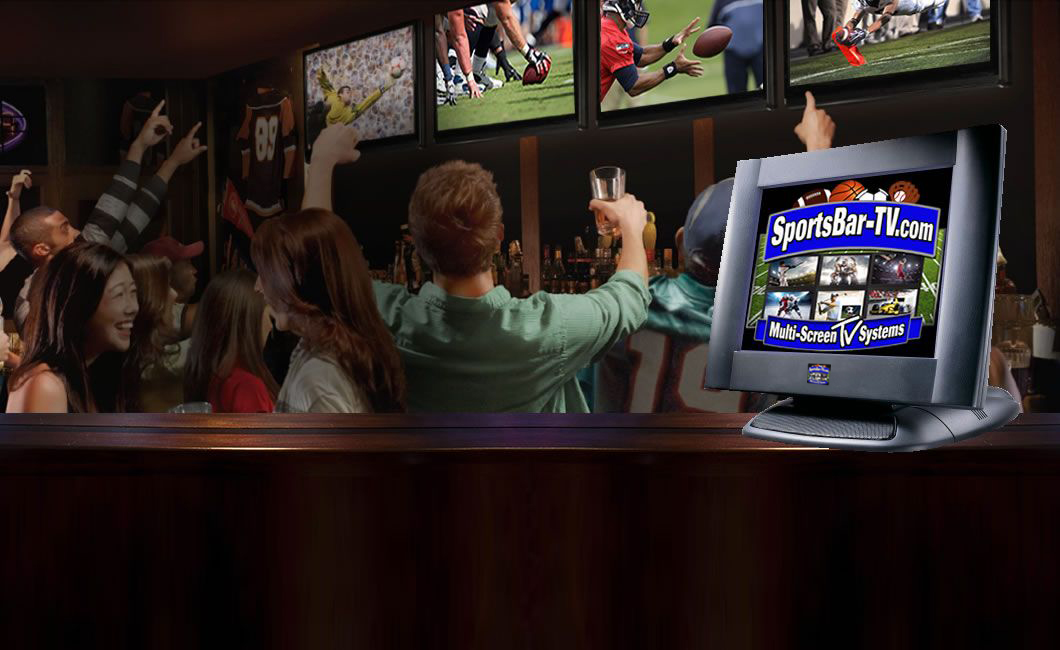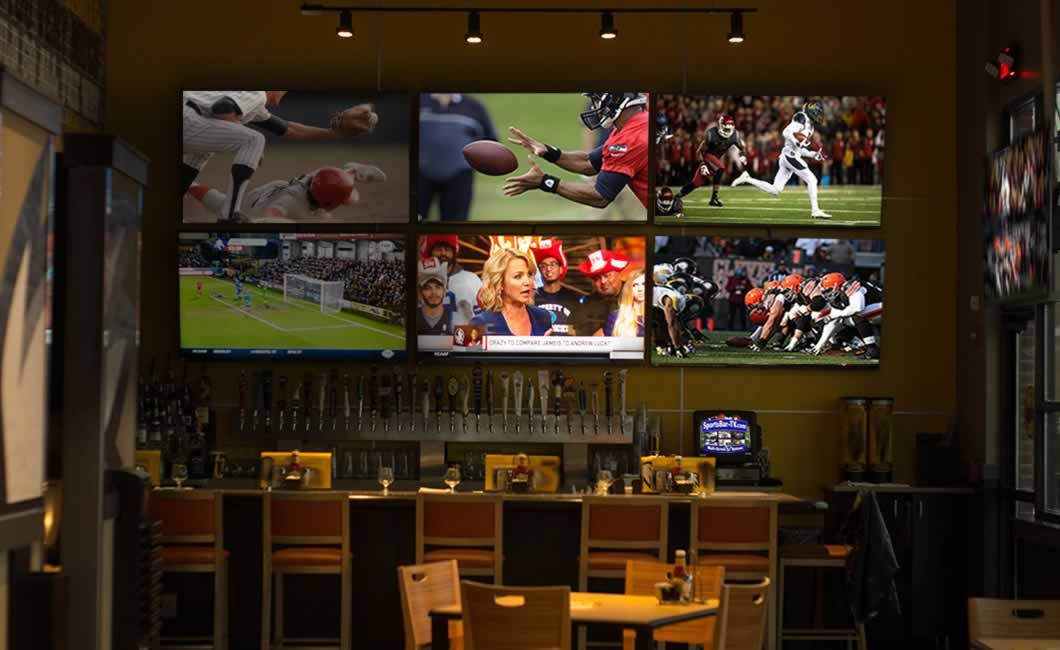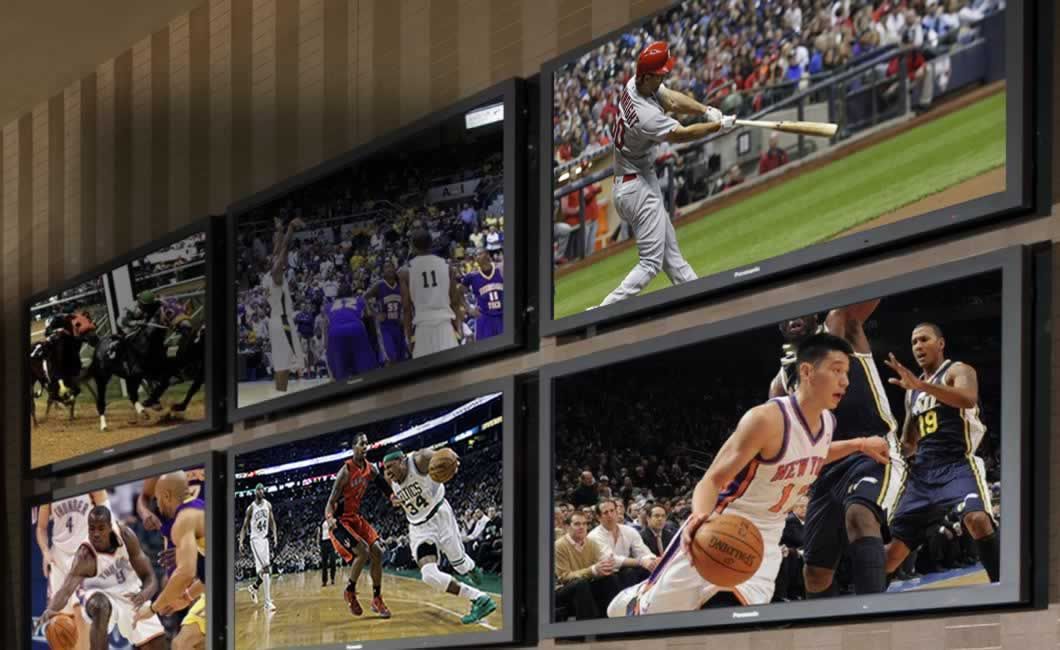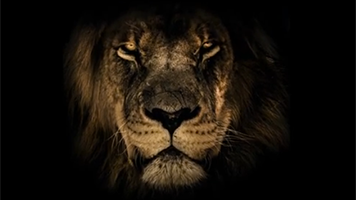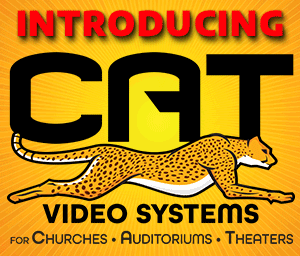The king of the jungle shares thoughts on controlling televisions in bars and restaurants.
He tells where you can get an affordable TV control system for your sports bar. Bar and restaurant owners take a minute and listen to what the king has to say about controlling your multiple TV systems, TV walls and other audio video equipment with one pad or touch screen from Sports Bar TV Systems.
Main Menu
The Psychology of Sports Fans
First, let's look at "BIRGing." This term is not a typo of an eating disorder, but applies to the phenomenon called "Basking in Reflected Glory." When your team is doing well, you feel great. Research shows that on the day after a team's win, people feel better about themselves. They say "we" won, and by "we," they don't mean themselves, personally. The closer you identify with the team, the more likely you are to BIRG. People who BIRG also are more likely to wear their team's regalia on the day after a victory.
In contrast, "CORFing" means that you "Cut Off Reflected Failure." Your team was trounced and now you want to distance yourself from them and their disgrace as much as possible. It's not "we," who lost, it's "they." The last thing a CORFer wants to wear on the day following the team's loss are hats or shirts with the team's logo. This is the test of the true vs. fickle fan. It's the CORFers who are the fickle fans. Their identification with them rises and falls with the box scores. True fans, in contrast, will don jerseys, hats, and almost any item with the team logo no matter how poorly their team performs. True fans may feel dejected, but their heroes remain their heroes, even if somewhat tarnished by defeat.
These two aspects of the psychology of sports fans are great for understanding how fans, true and fickle, behave after victory and loss, but other concepts help explain why fans do what they do during games. Fans who actually attend games regularly display the social psychological phenomenon of disinhibition. They shout, yell, stand up, cheer, and high five strangers all around them. Even people who are ordinarily reserved and shy will explode in bursts of exhibitionism when surrounded by other people engaging in the same unrestrained excitement. Unfortunately, at times their disinhibition can create havoc as rowdy fans spill out onto the streets after a victory (or defeat) until subdued by local authorities. Needless to say, alcohol helps foster the disinhibition effect. You don't even have to attend the game to show the disinhibition effect. Sports bars provide a fine venue for the group mentality to take over and for alcohol to nurture the process.
Whether you attend the game, watch or listen to it, or follow the scores on line, sports fans are particularly subject to the effect known as superstitious conditioning. Skinner discovered this effect when he was training the pigeons in his Skinner box to perform their various feats including, appropriately, "Take Me Out to the bal Game" on a xylophone. When Skinner trained his pigeons through operant conditioning, he noticed that they would start to perform behaviors that he was not reinforcing but that the pigeons seemed to "think" they needed to perform in order to get their pellet rewards. For example, Skinner may have been training the pigeons to discriminate between a + and a - displayed above the lever they needed to peck at. However, the pigeons sometimes added their own unnecessary move, such as turning in a circle, before pecking at the right target. That little dance, superstitiously reinforced (because it wasn't necessary to receive the reward), then became part of the pigeon's ritual.
What do pigeons pecking at a lever have to do with sports fans? Maybe you already see the connection. Sports fans will claim that by turning on the game and watching it, they caused the team to start scoring and eventually winning the game. Others will claim the opposite, avoiding any real-time action because they can "cause" the team to lose just by turning in. Then there are the lucky jerseys, hats, sneakers, t-shirts, etc., etc., that sports fans will wear (or not) to help their teams win. Wearing a hat facing forward? Turn it backward and maybe the team will score. If they do, you'll never wear that hat with the brim facing forward ever again during a game.
The ingroup-outgroup bias is yet another tried and true social psychological phenomenon. The fans of one team, the "in-group" will deprecate the fans of the other team, the "outgroup." There typically is very little, if anything, that distinguishes these two groups of fans. They are passionate about their teams, know every detail about the players, and religiously follow the progress of their hometown heroes. The only factor that differentiates these groups is the team they root for. Yet, people create arbitrary distinctions between the teams (and fans) they love and those they hate. It's doubtful that knowledge of this social psychological principle will lead to fans of the Patriots to reach out and hug fans of the Jets, but theoretically they should recognize that they are more alike than they are different.
Athletes themselves are subject to a host of other social psychological phenomena. Debates wage in the literature about whether a team is advantaged or not by playing a clutch game at home. The "home team advantage," which most people believe in, refers to the slight edge that the home team has due to the familiarity they have with the field, the preponderance of enthusiastic (i.e. disinhibited) fans in the stands, and the fact that they don't have to travel. Conversely, Florida State psychologist Roy Baumeister supports the "home chocke hypothesis" which predicts that home teams are more likely to lose in the final playoff games of a series because their self-consciousness is pathologically increased and they can't focus on the game. Instead, they focus on how the fans are feeling or perhaps on how much they'll enjoy the celebration when they win. In either case, the statistical and theoretical battle will no doubt continue. The possibility that playing a home game isn't all that advantageous is nevertheless an interesting one.
By accepting you will be accessing a service provided by a third-party external to https://www.sportsbar-tv.com/
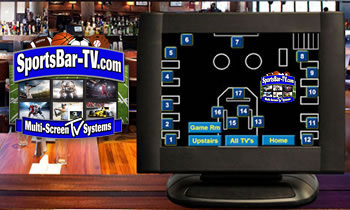
SportsBar-TV Systems Has the Easiest to use TouchScreen Controls Available!
Every TV in your establishment is displayed in it's exact location on the floorplan of our Crestron TouchScreen control system.
Attendants can easily change content to any TV by simply touching the location of the screen they want to control.
